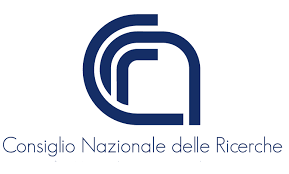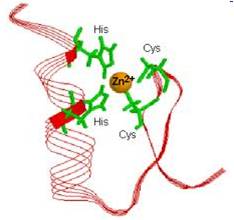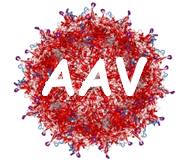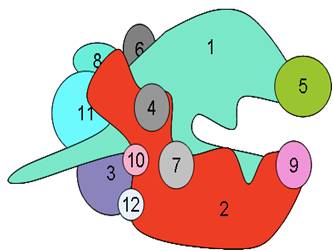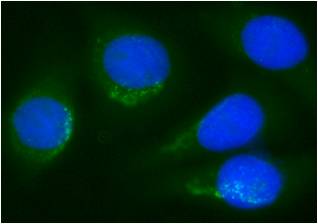
Fax :+390649255125
claudio.passananti@uniroma1.it
Senior Researcher
National Research Council
Istitute of Molecular Biology and Pathology CNR
Department of Molecular Medicine, Sapienza University of Rome , Viale Regina Elena 291, 00161 Rome, Italy
My research interests are focused on gene expression regulation, RNA metabolism and vesicular trafficking. After the degree in Biology, obtained at the University of Naples, I moved to Rome University "La Sapienza" studying Polyoma virus gene expression. In 1984, I moved to the Imperial Cancer Research Fund, London, working on isolation and characterization of cellular enhancers. Back to Rome University, I isolated and studied a set of transcription factor genes named “Krab-Zinc Finger”. I have been involved in developing novel molecular technologies like: yeast and mammalian two hybrid/one-hybrid, siRNA methodologies, immuno-precipitation of ribonucleoprotein complexes. Recently, as member of a team, using yeast two hybrid experiments, I have been involved in the characterization of several RNA polymerase II direct and/or indirect interactors: eEF1g, Che-1, CCHCR1, Myogenin, Keratin-19, Hax1, ATF4. Thanks to the discovery of precise rules governing zinc finger domains and target DNA sequence, I was involved in gene therapy projects based on the design and use of artificial transcription factors to re-program the expression of disease-related genes, focusing on Duchenne muscular dystrophy pathology. In particular, I have accumulated experience in recombinant adeno-associated viral vectors to deliver therapeutic artificial genes. |
-Pisani C, Strimpakos G, Gabanella F, Di Certo MG, Onori A, Severini C, Luvisetto S, Farioli-Vecchioli S, Carrozzo I, Esposito A, Canu T, Mattei E, Corbi N, Passananti C. Utrophin up-regulation by artificial transcription factors induces muscle rescue and impacts the neuromuscular junction in mdx mice. Biochim Biophys Acta. 2018 Apr;1864(4 Pt A):1172-1182. -Gabanella F, Pisani C, Borreca A, Farioli-Vecchioli S, Ciotti MT, Ingegnere T, Onori A, Ammassari-Teule M, Corbi N, Canu N, Monaco L, Passananti C, Di Certo MG. SMN affects membrane remodelling and anchoring of the protein synthesis machinery. J Cell Sci. 2016 Feb 15;129(4):804-16. -Federman N, de la Fuente V, Zalcman G, Corbi N, Onori A, Passananti C and Romano A. Nuclear factor κB-dependent histone acetylation is specifically involved in persistent forms of memory. J Neurosci. 2013 Apr 24;33(17):7603-14 -Onori A, Strimpakos G, Monaco L, Mattei E, Passananti C and Corbi N. UtroUp is a novel six zinc finger artificial transcription factor that recognises 18 base pairs of the utrophin promoter and efficiently drives utrophin upregulation. BMC Mol Biol. 2013 Jan 30;14(1):3 -Zampieri M, Guastafierro T, Calabrese R, Ciccarone F, Bacalini MG, Reale A, Perilli M, Passananti C, Caiafa P. ADP-ribose polymers localized on Ctcf-Parp1-Dnmt1 complex prevent methylation of Ctcf target sites. Biochem J 2012 Jan 15;441(2):645-52. |
- Dr. Nicoletta Corbi, CNR Researcher - Dr. Annalisa Onori, CNR technician. - Dr. Cinzia Pisani, post-doc
- |
Collaborations With other institutions - Dr. Elisabetta Mattei, IBCN-CNR, Rome, Italy. -Dr. Maria Grazia Di Certo IBCN-CNR, Rome, Italy. -Dr. Maurizio Fanciulli, SAFU Laboratory, Regina Elena Cancer Institute, Rome, Italy. - Prof. Arturo Romano, Buenos Aires University, IFIBYNE, UBA-CONICET, Buenos Aires. Argentina -GianMaria Fimia, National Institute for Infectious Diseases, Lazzaro Spallanzani IRCCS, Rome, Italy. -Prof. Kay E. Davies, Oxford University, Oxford,UK -Prof. Christoph Klein, Dr. von Hauner Children's Hospital, Ludwig-Maximilians University in Munich, Germany |
After the degree in Biology, obtained in 1981 at the University of Naples, by working in molecular biology on the Isolation and characterization of the ribosomal genes of the sea-urchin, the proponent moved to Rome University "La Sapienza". During this period of time spent in the laboratory of Prof. Paolo Amati, he studied: The Polyoma virus genome region involved in the regulation of replication and transcription adding knowledge in cellular biology. In 1984, he moved to the Imperial Cancer Research Fund, London, in the laboratory directed by Dr. Mike Fried, working on Isolation and characterization of cellular enhancers, and DNA amplification. In 1988, he was back to the University of Rome "La Sapienza”, where he was researching in the field of Genes expression and regulation isolating a set of mouse transcription factor-Krab-Zinc Finger genes involved in both germ line and muscle differentiation. Besides the knowledge acquired in molecular and cellular biology, the proponent become an expert on twohybrid/one-hybrid, siRNA methodologies, and immuno-precipitation of ribonucleoprotein complexes (RIP-ChIP). Recently, using “two hybrid system” in yeast, he characterized many direct interactions between RNA polymerase II and cofactors/ transcription factors. In particular, the proponent is involved in the characterization of “Che-1/AATF”, a multivalent adaptor connecting transcriptional regulation, checkpoint control, and apoptosis. Thanks to the discovery of precise rules governing zinc finger domains and target DNA sequence binding, the proponent interest in transcription regulation ended in the field to the Zinc finger based artificial transcription factors. He is currently involved in gene therapy projects based on the use of artificial transcription factors (ATFs) to re-program the expression of disease-related genes, focusing on Duchenne muscular dystrophy pathology. In particular, he is accumulating experience in recombinant adeno-associated viral vectors system to deliver ATF-based therapeutic molecules. In the field of artificial transcription factors, he has produced two Italian and one international patents. Employment and research experience Positions: The proponent is in charge of a permanent research position belonging to the Italian Research Council (CNR). He is group leader in the Laboratory of Molecular Pathology, CNR-IBPM c/o CRS-Regina Elena Cancer Institute. Starting from 1997, the proponent has his own laboratory set up with standard equipments. He has the possibility of using the common facilities available in both CNR-IBPM and in the Regina Elena Cancer Institute. Due to the type of position, the proponent will not have teaching and all of his time will be devoted to research.
Licensing agreement Licensing agreement between CNR and ILIT Bio-Ventures/ Zingenix on 2014 (prot.CNR-IBPM n. 0001360 del 01/08/ 2014)
Patents (National Research Council) All the patent families are financially supported by Zingenix Ltd (ex ILIT Bio-Ventures)
Assignee: CNR. Inventors: C. Passananti, N. Corbi, M.G. Di Certo, E. Mattei, C. Pisani, G. Strimpakos, S. Luvisetto. Title: “Compositions and Methods for treatment of Muscular Dystrophy”. European Patent Application n. 14002611.3 (2014) PCT/EP2015/066993 (2015) U.S. Patent Application n. 15/328,833 (2017) International publication number: WO2016/016119 (2016)
Assignee: CNR. Inventors: C. Passananti, Nicoletta Corbi, M.G. Di Certo, E. Mattei, C. Pisani, G Strimpakos. Title: “Vettore adeno-associato ricombinante muscolo-specifico e suo impiego nel trattamento di patologie muscolari”. Italian patent application n. TO2013A000669 (2013). Title: “Compositions and Methods for treatment of Muscular Dystrophy”. PCT/EP2014/002051 (2014) (originated from IP application n. TO2013A000669) European Patent Application n. 14746954.8 (2014) U.S. Patent Application n. 14/909,854 International publication number: WO2015/018503 (2015)
Assignee: CNR. Inventors: C. Passananti, M.G. Di Certo, A. Onori and N. Corbi. Title: “Nucleic acid codifying for a utrophin transcription specific regulating protein, protein codified thereby and uses thereof.” International publication number: WO2009044383( 2009) Granted IT patent n. 1379230 on 30/08/2010 Granted EP patent n. 2193200 on 2011 from PCT/IB2008/054089 filed on 06/10/2008. Validated in France, Germany, UK, Italy. Granted U.S. patent n. 8,304,235 on 2012
Assignee: CNR. Inventors: N. Corbi, E. Mattei and C. Passananti. Title: “Animale non umano transgenico per il gene sintetico zinc finger, regolatore trascrizionale dell’utrofina.” Granted Italian patent n. 0001359932 on 21/03/2007
|


